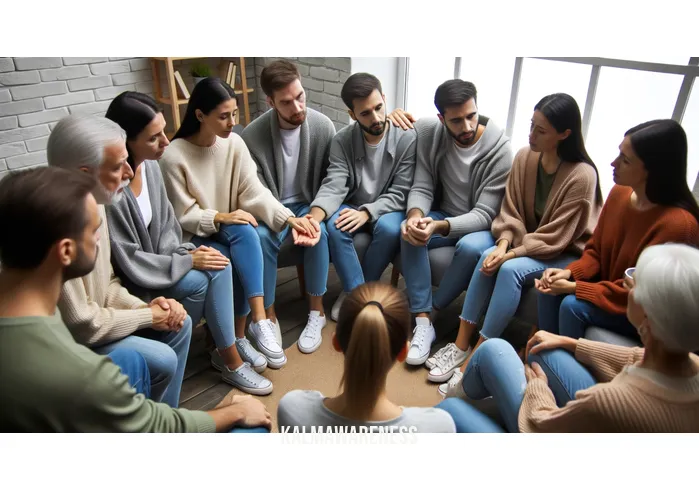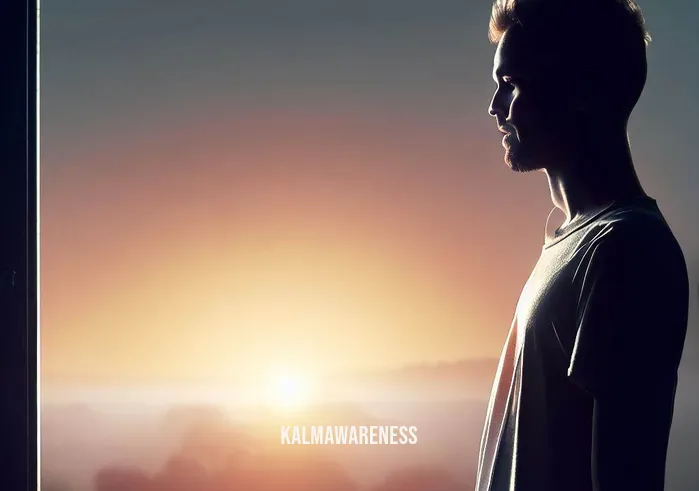Understanding Grief: When Love Finds No Place
“Grief is love with no place to go.” This profound statement encapsulates the essence of grief—a powerful emotion stemming from love, yet often misunderstood and undervalued. Especially for those of us in the 20-40 age bracket, grappling with grief can be a bewildering journey. It’s like having a reservoir of love and care that suddenly loses its main outlet. This essay explores this complex emotion, aiming to provide clarity and insight into how grief manifests and how we can navigate it.
The Nature of Grief
Grief is not just an emotion; it’s a process. It’s the natural response to losing someone or something we deeply love. This loss can take many forms – the death of a loved one, the end of a relationship, or even the loss of a cherished dream. As Jamie Anderson beautifully put it:
“Grief, I’ve learned, is really just love. It’s all the love you want to give, but cannot. All that unspent love gathers up in the corners of your eyes, the lump in your throat, and in that hollow part of your chest. Grief is just love with no place to go.”
How Grief Affects Us
- Emotionally: Feelings of sadness, anger, guilt, or numbness.
- Physically: Changes in appetite, sleep disturbances, or fatigue.
- Mentally: Difficulty concentrating, disorientation, or confusion.
- Spiritually: Questioning beliefs or a sense of emptiness.
Each individual’s journey through grief is unique. It’s not linear but rather a winding path with ups and downs, twists and turns.
Grief in the Modern World
In our fast-paced, achievement-oriented society, there’s often little space for grief. We’re expected to “move on” or “get over it” quickly. But grief doesn’t work on a timetable. It needs acknowledgement and expression. This is where understanding and embracing our grief becomes crucial. Acknowledging that “grief is love with no place to go” allows us to see our grief not as a burden, but as a testament to our capacity to love.
Finding Support
- Meditation and Mindfulness: Practices like EMDR meditation can help in managing the overwhelming emotions that come with grief.
- Community and Sharing: Talking about your feelings with trusted friends or support groups.
- Professional Help: Therapists or counselors, especially those skilled in grief therapy.
Embracing Grief as a Journey
Grief is not something to be fixed or resolved. It’s an experience to be lived through. It’s a journey of coming to terms with loss and relearning how to live in a world that has been forever changed. To understand grief more deeply, consider exploring grief meditation scripts that offer guided reflections for those in mourning.
Moving Forward
As we wrap up this first segment, it’s important to remember that grief, in its essence, is a form of love. It’s a challenging yet beautiful process that honors our capacity to love deeply. In the next segment, we’ll delve deeper into the stages of grief and explore strategies to navigate through them. Stay with us as we continue to unravel the complexities of grief, transforming it from a place of pain to a space of understanding and growth.

Navigating the Stages of Grief
In the first part of our exploration of grief, we understood it as “grief is love with no place to go.” Now, let’s delve into the stages of grief and how we can navigate them. Grief is not a linear journey but a complex set of emotions that ebb and flow.
The Stages of Grief
Understanding the stages of grief helps in recognizing and validating our feelings. Elisabeth Kübler-Ross, in her groundbreaking work, identified five stages of grief:
- Denial: Refusing to believe the loss is real.
- Anger: Frustration and helplessness.
- Bargaining: Trying to regain control.
- Depression: Deep sadness and withdrawal.
- Acceptance: Coming to terms with the reality of loss.
These stages are not strict steps but a guide to understanding our grief journey. As Anne Lamott said:
“You will lose someone you can’t live without, and your heart will be badly broken, and the bad news is that you never completely get over the loss of your beloved. But this is also the good news. They live forever in your heart, not just far away, but in your heart, where they reside to comfort and sooth you.”
Personalizing Your Grief Journey
| Stage | What it Might Look Like | How to Navigate |
|---|---|---|
| Denial | “This can’t be happening.” | Allow yourself to feel disbelief. |
| Anger | “Why me? It’s not fair!” | Express anger in healthy ways. |
| Bargaining | “If only I had done something differently.” | Recognize this as a natural reaction to loss. |
| Depression | “I’m too sad to do anything.” | Seek support; understand it’s okay to feel this way. |
| Acceptance | “I’m at peace with what happened.” | Embrace the new normal. |
Embracing the Healing Process
Grief, while painful, can be a transformative experience. It allows us to confront our deepest feelings and grow from them.
Healing Practices
- Meditation and Reflection: Engage in practices like clearing energy meditation to find inner peace.
- Writing and Journaling: Express your emotions through writing. Consider exploring resources like affirmations for fear of abandonment to help in this process.
- Rituals and Remembrance: Create personal rituals to honor the memory of what you’ve lost.
Anecdote: The Love That Remains
Consider the story of Emma, who lost her mother. Initially, she was engulfed in denial and anger. With time, through journaling and meditation, she began to find solace. She realized that her grief was a deep expression of her love. She started to embrace her emotions, understanding that her mother’s love continues to be a part of her.
Looking Ahead
As we delve further into the intricacies of grief in the concluding segment, we will explore practical strategies for managing and living with grief. This final part aims to empower you with tools and insights to turn your grief into a journey of healing and growth. Stay tuned for this transformative exploration.

Transforming Grief into a Journey of Personal Growth
In the final segment of our exploration of “grief is love with no place to go,” let’s focus on transforming our understanding of grief into positive action and personal growth. Grief, while challenging, offers a unique opportunity to deepen our self-awareness and compassion.
Practical Applications of Understanding Grief
Recognizing grief as an expression of love can change how we approach our emotions and experiences. Here are some ways to apply this understanding:
- Embracing Emotions: Allow yourself to feel your emotions without judgment. This acceptance is crucial for healing.
- Finding Expression: Channel your emotions into creative or constructive outlets, like art, writing, or physical activity.
- Connecting with Others: Share your experiences with others. Understanding that grief is a common human experience can foster deeper connections.
Implementing Self-Care Strategies
Self-care is vital in managing grief. It’s about nurturing yourself emotionally, physically, and mentally.
- Mindful Practices: Engage in activities like yoga or meditation. Tools like hand yoga poses can offer a simple yet effective way to center yourself.
- Healthy Habits: Prioritize sleep, nutrition, and exercise. Taking care of your body supports emotional healing.
- Seeking Support: Don’t hesitate to seek professional help if needed. Therapists can provide valuable guidance and perspective.
Summarizing Our Journey
Throughout this essay, we have explored the multifaceted nature of grief. We began by understanding grief as an unexpressed form of love and moved through its stages, recognizing its non-linear and unique nature to each individual. We’ve seen how grief, when acknowledged and embraced, can lead to profound personal growth.
“The darker the night, the brighter the stars, the deeper the grief, the closer is God!” – Fyodor Dostoevsky
Reflection and Action
As we conclude, I invite you to reflect on your own experiences with grief. How has it shaped you? What has it taught you about love, loss, and life? Consider journaling your thoughts or sharing them with a trusted friend.
A Call to Action
I encourage you to continue exploring and understanding your emotions. Visit Kalm Awareness for more resources on emotional well-being and personal growth. Share your journey with us in the comments, and let’s foster a community where we support and learn from each other’s experiences.
As we part ways in this written journey, remember that grief, in all its complexity, is ultimately a profound expression of love. It shapes us, teaches us, and reminds us of our capacity for deep emotional connection. Embrace it, learn from it, and let it guide you towards a more compassionate and understanding self.





